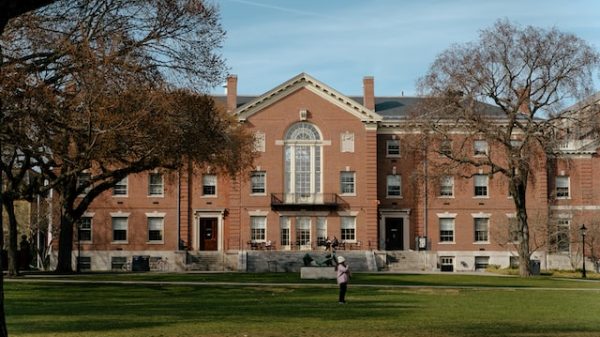Biocentrism, the idea that consciousness is fundamental to reality and the universe exists only as a result of our perception, is a controversial concept that has both drawn interest and faced criticism. While it’s not entirely “debunked” in the sense of being conclusively proven false, there are strong arguments against its core claims.
Here’s a breakdown of the main points:
What is biocentrism?
Biocentrism is a philosophical perspective that considers all living organisms to be central to the understanding of reality and the universe. This viewpoint contrasts with anthropocentrism, which places humans at the center of moral and philosophical considerations. Biocentrism asserts that all living entities have intrinsic value and should be considered in ethical and environmental decision-making.
The concept of biocentrism extends beyond the human species to encompass the entire ecosystem, emphasizing the interconnectedness and interdependence of all living things. Proponents of biocentrism argue that it promotes a more sustainable and harmonious relationship between humans and the natural world, advocating for the protection and preservation of biodiversity.
Biocentrism has applications in various fields, including environmental ethics, conservation biology, and eco-philosophy. It challenges the traditional anthropocentric views that prioritize human interests over the well-being of other species and ecosystems.
Who is the founder of biocentrism?
Here’s a breakdown of key figures in relation to biocentrism:
Early Influences:
- Albert Schweitzer (19th-20th Century): While not using the term “biocentrism,” Schweitzer advocated for “reverence for life,” emphasizing the inherent worth of all living things.
- Aldo Leopold (20th Century): He emphasized the ethical responsibility humans have towards nature and the interconnectedness of ecological systems. His book “A Sand County Almanac” is considered a major work in environmental ethics.
Modern Biocentrism:
- Robert Lanza: Often credited with popularizing the term “biocentrism” in the 21st century, Lanza’s book “Biocentrism: How Life and Consciousness are the Keys to Understanding the Universe” explores the idea that consciousness plays a fundamental role in shaping reality.
- Paul Taylor: Considered a key figure in environmental ethics, Taylor’s book “Respect for Nature” offers a rigorous philosophical defense of biocentrism, arguing for the inherent value of all living things based on their capacity for experiencing “good of their own.”
Therefore, instead of pinpointing a single founder, it’s more accurate to acknowledge the contributions of multiple thinkers who have helped develop and shape the various interpretations of biocentrism throughout history.

What does biocentrism believe?
Biocentrism is an ethical and philosophical viewpoint with some scientific leanings that revolves around the intrinsic value of all living things. Here are some key beliefs associated with it:
Intrinsic value of all life: Unlike anthropocentrism which places humans at the center of moral concern, biocentrism extends moral consideration to all living organisms. This means all life forms, from plants and animals to bacteria and even ecosystems, possess inherent worth and deserve respect, regardless of their usefulness to humans.
Interdependence and web of life: Biocentrists view life as a complex web of interconnectedness, where all living things rely on each other for survival and well-being. They emphasize the importance of understanding and respecting these interrelationships and maintaining the delicate balance of ecosystems.
No inherent human superiority: Biocentrism rejects the notion of human exceptionalism and argues against claims of human dominance over nature. Humans are viewed as simply one species amongst many, with no inherent right to exploit or subjugate other living beings.
Moral consideration based on life itself: Unlike some bioethics frameworks that base moral standing on sentience or consciousness, biocentrism proposes that life itself is the basis for moral consideration. Every living thing, simply by virtue of being alive, has intrinsic value and deserves ethical consideration.
Implications for environmental ethics: Biocentrism challenges traditional approaches to environmental protection that often prioritize human interests over the health of the planet. It advocates for an ecocentric approach that seeks to preserve the integrity of ecosystems and protect all living things, not just those directly beneficial to humans.
Challenges and critiques: Biocentrism faces various challenges, including:
- Defining life: Determining the precise boundaries of “life” can be difficult, especially when considering organisms like viruses or single-celled organisms.
- Balancing human needs with ecological goals: Implementing biocentric principles on a practical level can be complex, particularly when human needs and desires conflict with the well-being of other species or ecosystems.
- Potential for conflict with established ethical frameworks: Biocentrism might clash with existing ethical principles like utilitarianism or rights-based ethics, necessitating careful consideration and potentially prompting revisions to existing ethical frameworks.
Overall, biocentrism presents a compelling perspective that challenges our traditional relationship with nature and encourages a more respectful and mindful approach to the environment. While it faces challenges and ongoing philosophical debates, it offers a valuable lens for considering our place within the web of life and our responsibility towards all living things.
Unveiling the Truth: Biocentrism Debunked Myths
Introduction: Dissecting “Biocentrism Debunked”
In the realm of scientific discourse, the topic of biocentrism has sparked intense debates and discussions. “Biocentrism Debunked: A Comprehensive Analysis” stands as a pivotal exploration into the veracity of biocentric principles. Let’s delve into the core of this controversial concept, dissecting its foundations and shedding light on the prevailing myths.
The Biocentrism Paradigm: A Closer Look
Is Biocentrism a Scientific Marvel or Mere Misconception?
Biocentrism proposes a worldview that places living organisms at the center of the universe, attributing a certain consciousness to all living things. While this concept may seem intriguing, a closer examination is essential to discern fact from fiction.
The Myth of Universal Consciousness
Challenging the Notion of a Cosmic Mind
One of the primary tenets of biocentrism is the idea of a universal consciousness. Critics argue that this notion lacks empirical evidence and fails to withstand rigorous scientific scrutiny. The question remains: Can we truly attribute a conscious mind to the entire cosmos?
Biocentrism and Quantum Physics: Bridging the Gap
Navigating the Nexus Between Biocentrism and Quantum Mechanics
Proponents of biocentrism often draw connections to quantum physics, suggesting a harmonious relationship between the two. However, a nuanced analysis reveals that such connections might be speculative rather than substantive. Can biocentrism find solid ground in the complex realms of quantum mechanics?
Dispelling Misconceptions: Biocentrism vs. Anthropocentrism
Breaking Down the Boundaries Between Human-Centric and Life-Centric Views
Biocentrism emerges as a reaction against anthropocentrism, challenging the idea that humans stand apart from and above the rest of nature. However, it is crucial to discern between dismantling anthropocentric biases and adopting an all-encompassing biocentric perspective. How can we strike a balance between acknowledging the interconnectedness of life and avoiding an oversimplified worldview?
What is the main point of biocentrism?
Biocentrism doesn’t have a single, universally agreed-upon main point. It’s more of a broad philosophical and ethical framework that encompasses a set of interconnected ideas and values. However, some core principles stand out:
1. Intrinsic value of all life: Biocentrism fundamentally challenges the dominant anthropocentric view that prioritizes humans above all else. Instead, it argues that all living things possess inherent worth and deserve moral consideration, regardless of their usefulness or sentience. This extends to plants, animals, ecosystems, and even potentially entire biospheres.
2. Interdependence and web of life: Biocentrism emphasizes the deep interconnectedness and interdependence of all living things. We are not separate entities but inextricably woven into a complex web of life, where the well-being of one is connected to the well-being of all. This fosters a sense of responsibility towards maintaining the ecological balance and preserving biodiversity.
3. Shift in moral priority: Biocentrism promotes a shift in our moral priorities, challenging the idea that human needs always come first. It encourages us to consider the ethical implications of our actions on all living things, not just on ourselves. This might involve making difficult choices when human interests conflict with the well-being of other life forms.
4. Consciousness and reality: Some interpretations of biocentrism explore the possibility that consciousness plays a key role in shaping reality. This suggests that our experience of the universe is not objective but rather shaped by our own awareness and perception. This opens up fascinating avenues for exploring the nature of consciousness and its relationship to the world around us.
5. Openness to mystery and ongoing exploration: Biocentrism doesn’t claim to have all the answers. It acknowledges the vastness of the unknown and encourages an attitude of humility and curiosity in our understanding of life and the universe. It welcomes ongoing exploration, questioning, and dialogue as we continue to learn and evolve our relationship with the world around us.
Therefore, the main point of biocentrism isn’t a single, static concept but rather a shift in perspective and a commitment to living in a more mindful and ethical way. It encourages us to see ourselves as part of a larger web of life, to respect the intrinsic value of all living things, and to strive for a more sustainable and just relationship with the planet.

What are the 4 duties of biocentrism?
The “four duties of biocentrism” aren’t universally agreed upon within the various interpretations of this philosophical framework. However, some prominent thinkers like Robert Lanza propose a set of core principles or ethical guidelines inspired by biocentrism, often referred to as duties, responsibilities, or pillars:
1. Non-maleficence: This principle essentially translates to “do no harm.” It emphasizes avoiding causing unnecessary suffering or harm to any living thing, including plants, animals, and ecosystems. It’s considered a fundamental duty in biocentrism, recognizing the intrinsic value of all life.
2. Non-interference: This principle encourages minimal interference in the natural world and the lives of other organisms. It suggests allowing other beings to pursue their own “good” in their own ways, respecting their inherent autonomy and avoiding unnecessary manipulation or control.
3. Fidelity: This principle calls for treating all living things with honesty and respect. It involves avoiding deception, exploitation, or using other life forms purely as a means to an end. Fidelity requires acknowledging the intrinsic worth of every being and engaging in interactions that promote mutual well-being.
4. Restitutive justice: This principle recognizes our responsibility to repair any harm caused to living things or ecosystems. It involves taking active steps to restore balance and compensate for any negative impacts arising from human actions. This could involve environmental restoration, conservation efforts, or promoting policies that prioritize ecological sustainability.
It’s important to note that these principles are not rigid rules but rather guideposts for ethical decision-making within the biocentric framework. Applying them in real-world situations can involve complex situations and require careful consideration of context and consequences. The ongoing discussions and research surrounding biocentrism seek to refine these principles and explore their practical implications in various realms, from individual behavior to environmental policy.
What is the new theory of biocentrism?
As previously mentioned, biocentrism itself isn’t a single, static theory with a definitive “new” one emerging. It’s more of a multifaceted framework with various interpretations and strands of thought within it. However, within the umbrella of biocentrism, several exciting developments and novel ideas are actively being explored. Here are some potential areas where we might see further advancements:
1. Quantum Biocentrism: This emerging viewpoint seeks to bridge the gap between biocentrism and quantum mechanics, suggesting that conscious observation plays a critical role in collapsing the wave function and shaping the outcome of quantum events. This has implications for understanding the fundamental nature of reality and the relationship between mind and matter.
2. Biocentric Cosmology: This area expands on the idea that consciousness creates the universe, exploring what this means for our understanding of space, time, and the origins of the cosmos. Some researchers investigate possibilities like holographic models of reality or panpsychism, where consciousness is a fundamental property of the universe itself.
3. Biocentric Information Theory: This approach utilizes information theory to quantify the intrinsic value of different life forms based on their complexity and information content. This could potentially offer a more objective basis for valuing non-human life and inform biocentric decision-making in areas like conservation and bioethics.
4. Neurobiological Foundations of Biocentrism: Exploring the neural basis of consciousness and its relationship to our perception of reality might provide insights into how our brains construct and shape our experience of the world. This could shed light on the mechanisms underlying biocentric phenomena and offer potential avenues for further research.
5. Applications of Biocentrism: Integrating biocentric principles into various fields like environmental ethics, education, and policy holds enormous potential. This could involve developing frameworks for sustainable development, fostering a more respectful relationship with nature, and rethinking our interactions with the non-human world.
It’s important to note that these are just a few examples, and the possibilities within biocentrism are constantly evolving as new research and discoveries emerge. While not all these ideas will necessarily hold water, the ongoing exploration of these new frontiers in biocentrism holds great promise for deepening our understanding of ourselves, our place in the universe, and our relationship with all living things.
How does biocentrism explain death?
Within the diverse tapestry of biocentrism, there isn’t a single, unified explanation for death. Different interpretations offer various perspectives on this profound mystery. Here are some possible insights:
From the lens of consciousness:
- Continuation of consciousness: Some biocentrists propose that consciousness, as a fundamental force, doesn’t truly cease with physical death. It might transition into different forms, potentially rejoining a universal consciousness or experiencing other realms beyond our current understanding.
- Transformation of experience: Others suggest that death signifies a transformation of our consciousness, transitioning into a different mode of existence or perception inaccessible to our current embodied state.
From the perspective of life’s web:
- Cycle of renewal: Death can be viewed as an integral part of the web of life, a necessary process for the renewal and continued vitality of ecosystems. The energy and matter from decaying organisms nourish new life, perpetuating the cycle of existence.
- Return to the interconnectedness: Some interpretations see death as a reintegration into the broader consciousness or energy field that permeates all living things. It signifies a return to the interconnectedness from which individual life springs.
Acknowledging the unknown:
Many biocentrists readily acknowledge the limitations of our current understanding when it comes to death. They emphasize the importance of respecting the mystery and focusing on appreciating the life we have here and now, while potentially leaving room for possibilities beyond our immediate comprehension.
Ultimately, the meaning and experience of death remain deeply personal and subjective. Biocentrism offers a variety of frameworks and perspectives that can potentially bring greater comfort and understanding in the face of this ultimate mystery. However, it’s important to remember that these are just interpretations, and the true nature of death might lie beyond our current grasp.

What are the problems in biocentrism?
Biocentrism, while offering a compelling perspective on our relationship with life and the universe, does face several challenges and potential problems. Here are some key aspects to consider:
1. Defining life: Determining what constitutes “life” can be surprisingly complex. While seemingly straightforward, it becomes tricky when considering organisms like viruses, single-celled organisms, or even complex systems like ecosystems. This ambiguity can lead to difficulties in consistently applying biocentric principles.
2. Practical implementation: Putting biocentrism into practice presents practical challenges. Balancing human needs with the well-being of all living things can be demanding, especially when resources are limited or conflicting interests arise. Finding solutions that prioritize the intrinsic value of all life while simultaneously addressing human needs requires careful consideration and compromise.
3. Conflict with existing ethical frameworks: Biocentrism might clash with existing ethical frameworks like utilitarianism or rights-based ethics. This can lead to dilemmas when evaluating decisions impacting both humans and other living things. Reconciling these frameworks and developing a cohesive ethical approach informed by biocentrism remains a work in progress.
4. Lack of empirical evidence: While biocentrism raises intriguing questions about consciousness and reality, its core claims currently lack strong empirical evidence. This absence of scientific validation can make it difficult to gain wider acceptance within the scientific community.
5. Subjectivity and potential for bias: If consciousness shapes reality, questions arise about objectivity and the potential for individual biases to influence the universe. This raises concerns about how to navigate personal perspectives and ensure fairness in decision-making when considering the value of different life forms.
6. Anthropocentrism in disguise: Some critics argue that biocentrism, despite its emphasis on all life, can inadvertently still prioritize humans. This potentially occurs by valuing sentient beings like animals over plants or by focusing on the preservation of ecosystems with high human utility. Examining and deconstructing these possible biases is crucial for achieving genuine biocentric ethics.
7. Difficulty defining “good” for non-human entities: Biocentrism often argues for respecting the “good of its own” for each living thing. However, defining what constitutes “good” for non-human entities with potentially vastly different experiences and needs can be incredibly challenging. This opens up ethical complexities and uncertainties.
Despite these challenges, biocentrism continues to spark valuable discussions and offer fresh perspectives on our place within the universe. Ongoing research, dialogue, and critical analysis can help address these problems and refine the biocentric framework, offering a more comprehensive and ethically sound approach to life and our relationship with the world around us.
Conclusion :
Biocentrism, by its nature, doesn’t offer a single, definitive conclusion. It’s more of an ongoing exploration and evolving framework rather than a closed system with a final answer. The beauty of biocentrism lies in its openness to questions and its encouragement to reexamine our relationship with life and the universe in a more holistic and conscious way.
However, there are some key insights that emerge from considering different biocentric perspectives:
-
Interconnectedness and web of life: Biocentrism highlights the profound interconnectedness of all living things and the delicate balance of ecosystems. This fosters a sense of responsibility towards preserving the health of the planet and respecting the intrinsic value of all life forms.
-
Shifting perspective from human-centric to life-centric: Biocentrism challenges the traditional anthropocentric view that places humans at the center of moral concern. It suggests a fundamental shift in perspective, recognizing the inherent worth of all living things and advocating for ethical consideration beyond just human interests.
-
Consciousness as a potential key: Some interpretations of biocentrism propose that consciousness plays a vital role in shaping reality. This opens up fascinating possibilities for understanding the nature of the universe and our place within it, while also raising questions about the ethical implications of conscious beings interacting with a universe potentially shaped by their own perceptions.
-
Importance of living sustainably and ethically: Recognizing the intrinsic value of all life motivates us to live sustainably and minimize our negative impact on the planet. Biocentrism encourages finding ways to meet human needs while respecting the well-being of other living things and preserving the ecological balance.
-
Openness to mystery and ongoing exploration: Biocentrism acknowledges the vastness of the unknown and encourages a sense of humility in our understanding of the universe and life itself. It invites ongoing exploration, questioning, and dialogue as we continue to learn and evolve our relationship with the world around us.
Therefore, the “conclusion” of biocentrism isn’t a static endpoint but rather a continuous journey of discovery. It prompts us to constantly reassess our values, reframe our relationship with nature, and engage in ethical practices that respect the intrinsic worth of all life. The journey itself, with its open-ended nature and challenging questions, is perhaps the most significant message of biocentrism.






















































































